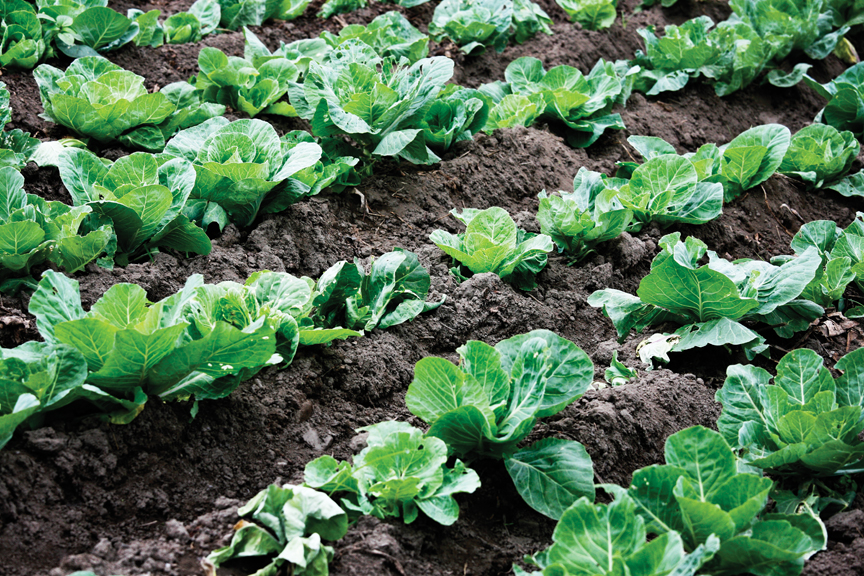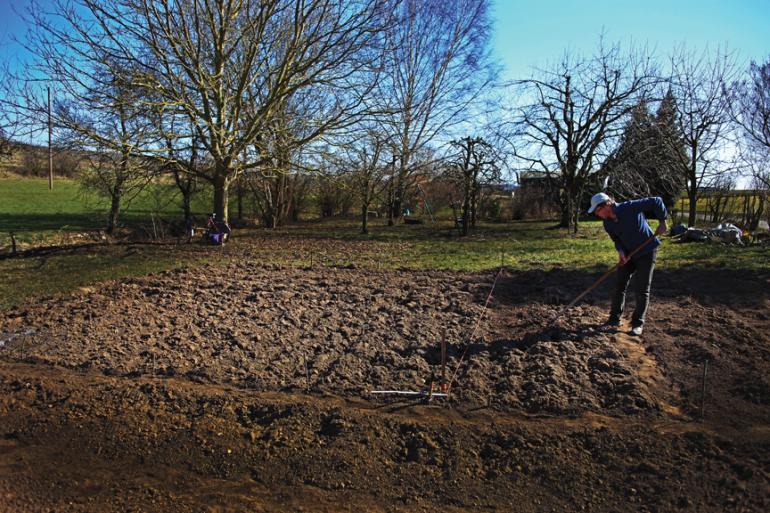Get Down and Dirty
Cultivating a healthy environment for your garden.
Healthy soil is the basis of healthy plants and a healthy environment. When garden soil is in good shape, there’s less of a need for fertilizers or pesticides. As author and respected gardener Frank Tozer writes, “When building soil, you not only improve your plants health, but you can also improve your own.” So and what can you do to make sure your soil is the best it can be? Here are some factors to consider this spring.
Improving Garden Soil
Adding organic matter in the form of compost and aged manure, or using mulch or growing cover crops is the best way to prepare soil for planting. Adding chemical fertilizers will replenish only certain nutrients and do nothing for maintaining good, friable soil.
Air
Just like humans, plants need air—both above ground for photosynthesis and in the soil as well. Good soil provides just the right space between its particles to hold air that plants will use. Adding organic matter, especially compost, will help balance the air supply if your soil is too dense or too sandy. The perfect soil is about 25% air. Also, try not to step in the beds or use heavy equipment that can compact the soil, and avoid working the soil if it’s very wet.
Water
All forms of life need water—but not too much or too little. Healthy soil should be about 25% water. In soils with too much pore space (sandy soils), water quickly drains through and cannot be used by plants. In dense, silt, or clay soils, the soil gets waterlogged as all the pore space is filled with water. This will suffocate plant roots and soil organisms. The best soils have both small and large pore spaces. Adding organic matter is the best way to improve the structure of your soil and will hold water so that plants can use it when they need it.
Organic Matter
All soils get better with annual compost applications on top. Organic compost can be purchased by the bag or by the yard, or you can make it at home. Compost and other organic materials hold soil particles together and help retain moisture. Compost is a food source for beneficial microorganisms. Making your own compost can be as easy as piling brown layers (straw, leaves), and green layers (grass clippings, livestock manure, food waste) on top of one another. Keep the pile moist and turn it often. If a pile is too messy or you are concerned about animals getting into it, there are all kinds of composters available for purchase to contain your vegetable scraps.
Mulch
Organic mulch, such as straw, hay, grass clippings, or shredded bark, covers the soil and insulates it from extreme heat and cold. Mulches reduce water loss through evaporation and deter the growth of weeds. They break down slowly, enriching the soil with organic matter. Inorganic mulches, such as pebbles, gravel, black plastic, or landscape fabrics, will prevent rapid evaporation and keep weeds down. However, inorganic mulches don’t benefit the soil by breaking down and adding organic matter. If you’re looking to improve your soil structure, use a clean, seed-free, high-quality garden mulch.

Fertilizer
Dry or liquid fertilizer can add nutrients to the soil that might not get there any other way. Organic fertilizers work a little slower than their synthetic counterparts, but they release nutrients over a longer timeframe. Additionally, synthetic fertilizers are bad for the environment and can make the soil worse in the long run, as beneficial microorganisms are killed off. Organic dry fertilizers should be mixed into the soil according to the directions on the label and then watered. They work more slowly than liquid fertilizers but last longer. There are dozens of recipes for making your own organic fertilizer.
Soil Texture
To make sandy soil less sandy, mix three to four inches of organic matter (like compost) into the soil. Use wood chips, leaves, hay, straw, or bark to mulch around plants and add at least two inches of organic material each year. Heavy clay soil will be improved with the addition of two to three inches of organic matter worked into it. Then add another inch or more to the top each year. Try not to till unless necessary.
Nutrient Deficiencies
Typically, bone meal is recommended to boost phosphorous levels in the soil while blood meal is suggested for raising nitrogen levels. However, both of these are products of slaughterhouses. Fortunately, there are some alternatives. In lieu of blood meal or fish emulsion, try alfalfa meal or alfalfa pellets, which is sold for rabbit food. Like alfalfa pellets, cottonseed meal can be purchased at your local feed store and provides nitrogen to the soil. It is pretty acidic, however, so use it in combination with lime unless you want to lower the soil pH.
Eric Vinje is the owner of Planet Natural.
Photos by Armin Vogel, Alex Proimos






